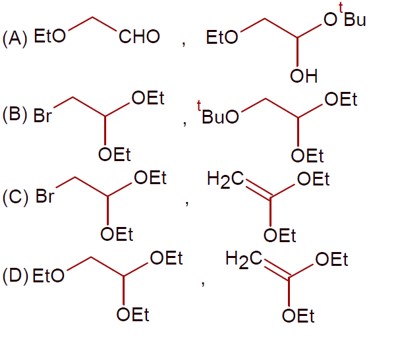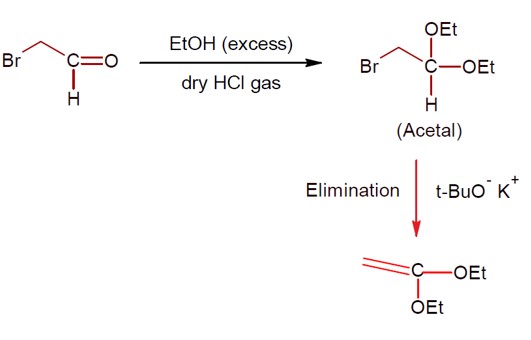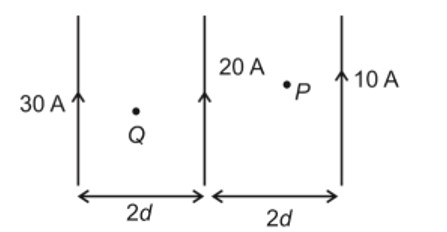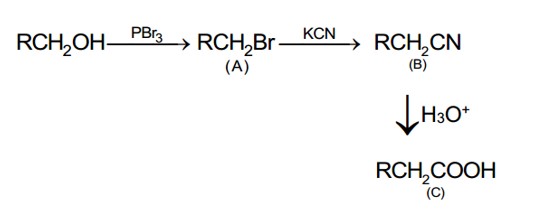[where Et → C?H?, t-Bu ⇒ (CH?)?C-]
Consider the above reaction sequence, product "A" and product "B" formed respectively are:
[where Et → C?H?, t-Bu ⇒ (CH?)?C-]
Consider the above reaction sequence, product "A" and product "B" formed respectively are:
Option 1 -
EtO-CH(OEt)-CHO, EtO-CH(OEt)-C(O)OtBu
Option 2 -
Br-CH(OEt)₂, OEt-CH₂-CH(OEt)₂
Option 3 -
Br-CH(OEt)₂, H₂C=C(OEt)₂
Option 4 -
EtO-CH(OEt)₂, H₂C=C(OEt)₂
-
1 Answer
-
Correct Option - 3
Detailed Solution:
Similar Questions for you
CH3—CH2—CHO does not undergo Cannizzaro reaction because it has α-hydrogen.
Acetaldehyde (CH3CHO) gives positive lodoform test and positive Fehling's solution test
CH3—CH2—CHO does not undergo Cannizzaro reaction because it has α-hydrogen.
Taking an Exam? Selecting a College?
Get authentic answers from experts, students and alumni that you won't find anywhere else
Sign Up on ShikshaOn Shiksha, get access to
- 65k Colleges
- 1.2k Exams
- 679k Reviews
- 1800k Answers









